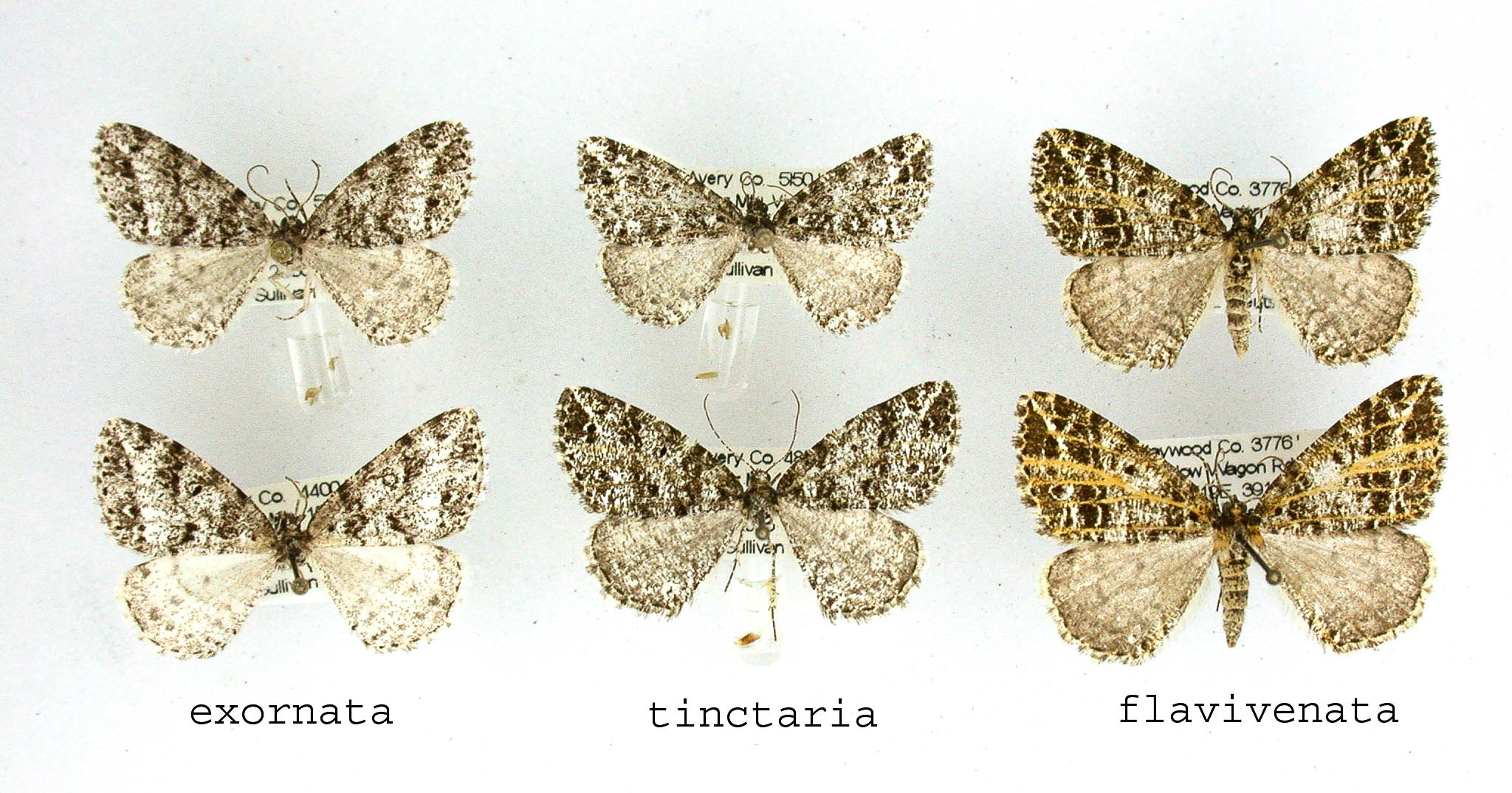Identification
Adult Markings: Of the three species this one has the trace of a broad, white postmedian line on the blackish forewing. Worn specimens can be very difficult to distinguish from O. tinctaria. Sexes are similar.
Adult Structural Features: The number of cornuti in the vesica of the aedeagus differentiates O. exornata from O. tinctaria. In North Carolina specimens the number varies from 2-4 and in Canadian specimens from 2-3 (McGuffin, 1977). In O. tinctaria there are usually 6-9 cornuti and in O. flavivenata there are usually 4-6 but maculation will distinguish this latter species.
Adult ID Requirements: Identifiable from good quality photos of unworn specimens.
Immatures and Development: Larvae are lime-green with a dull reddish mid-dorsal stripe (see Wagner et al., 2001, for an illustration and detailed description). Wagner et al. recommend that larvae of this genus all be reared in order to determine their identity.
Larvae ID Requirements: Identifiable only through rearing to adulthood.

 »
»

 »
»